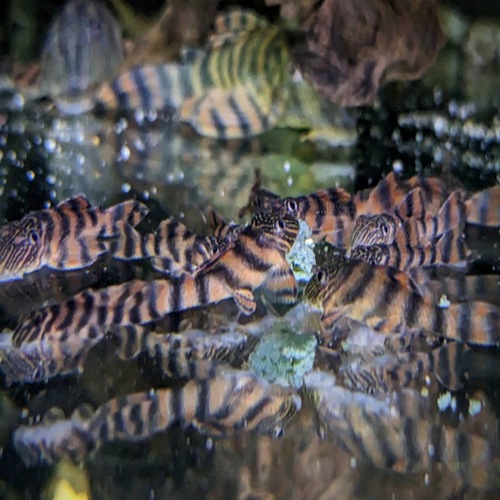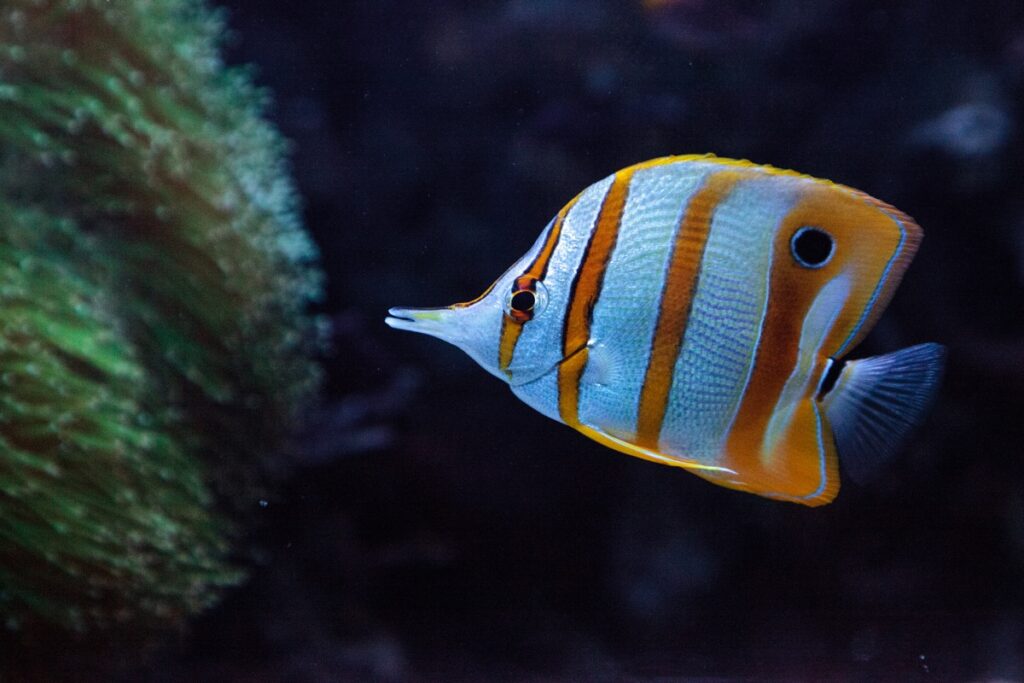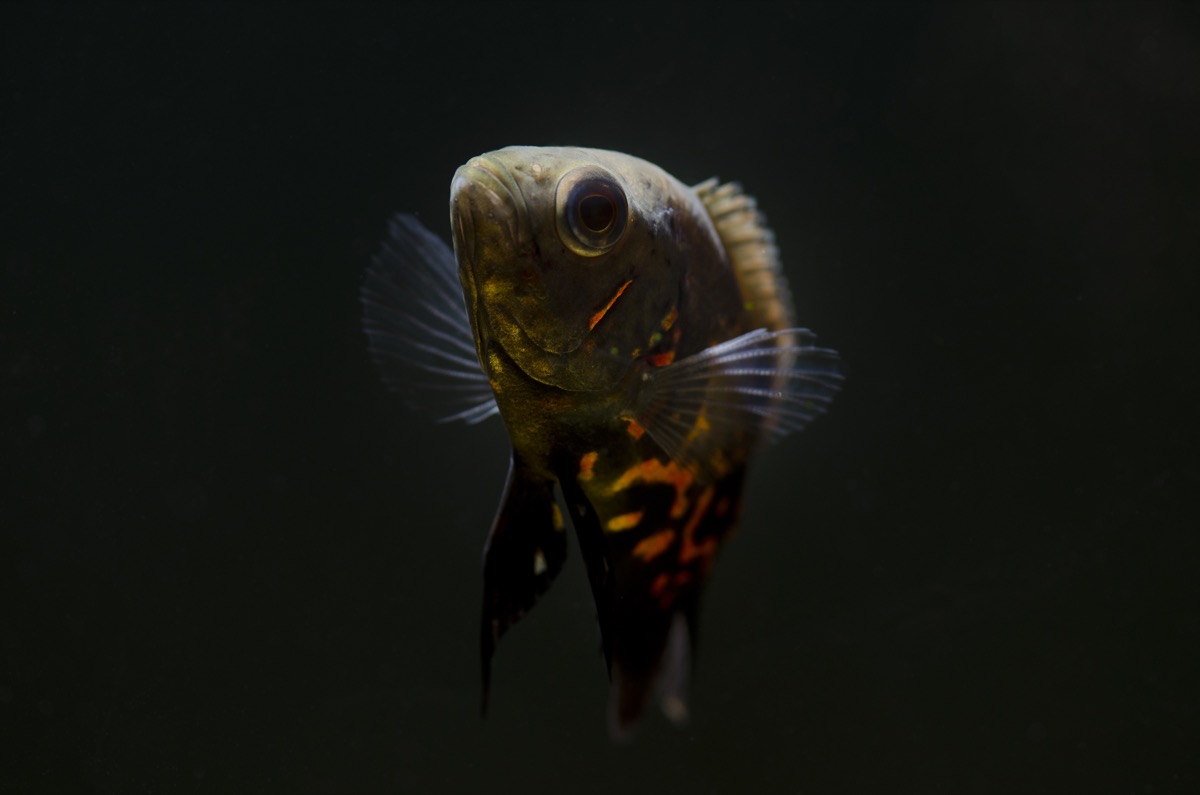Your basket is currently empty!
Description
The Acestridium dichromum, commonly known as the Two-Tone Twig Catfish or simply Dichromatic Twig Catfish, is a unique and rare species of armored catfish known for its slender, twig-like body and remarkable coloration. Native to the slow-moving rivers and streams of the Amazon Basin, particularly in Brazil, this catfish has evolved to blend seamlessly with driftwood and leaf litter in its environment. Due to its specialized care requirements and unique appearance, Acestridium dichromum is best suited for experienced aquarists interested in rare, delicate species.
Appearance
The Two-Tone Twig Catfish is named for its two distinct color phases: it exhibits a greenish-brown color during the day and a vibrant orange at night. This color-shifting adaptation helps it blend into its surroundings, whether hiding among plants and wood during the day or camouflaging against riverbed tones at night. The fish’s body is elongated and narrow, resembling a twig, with a pointed snout and small, delicate fins that enhance its mimicry of a twig or branch. Adults grow to about 4 inches (10 cm) in length, with a slim profile that allows them to camouflage exceptionally well in naturalistic tanks.
Habitat and Tank Requirements
In the wild, Acestridium dichromum inhabits slow-moving, acidic waters with ample submerged wood and leaf litter. For optimal health and natural behavior in captivity, these conditions should be replicated carefully. A tank of at least 20 gallons is suitable for a small group, though larger tanks allow for better stability in water parameters.
Tank Setup
Substrate: A sandy or fine-gravel substrate mimics the natural riverbed, providing a soft bed for the fish to rest on.
Décor: Driftwood and leaf litter are essential, as they not only provide hiding spots but also help maintain low pH by releasing tannins. Some aquarists add botanicals such as almond leaves or seed pods to recreate a blackwater environment.
Water Flow: Slow to moderate water flow is ideal to mimic the gentle currents of their natural habitat.
Temperature: They thrive in warm water, ideally between 75°F and 82°F.
pH: These catfish require slightly acidic water, with a pH between 5.5 and 6.5, as they are highly sensitive to alkaline water conditions.
Lighting: Dim lighting is preferred, as this replicates the dappled light in forest streams and helps reduce stress.
Diet and Feeding
Acestridium dichromum is a specialized herbivore with a diet that primarily consists of algae and biofilm in the wild. In captivity, feeding can be challenging, as they are selective eaters and may struggle to adapt to traditional fish foods. A diet rich in vegetable matter is essential. Offer algae wafers, blanched vegetables like zucchini and spinach, and high-quality spirulina-based pellets. Occasionally, they may consume a small amount of protein-based food, but overfeeding with protein can cause health issues. Allowing algae to grow naturally in the tank is beneficial, as it provides a steady source of food.
Temperament and Compatibility
The Two-Tone Twig Catfish is a peaceful and shy species that does best in a calm environment with gentle tank mates. Ideal tank mates include small, non-aggressive species such as tetras, pencilfish, small rasboras, and other catfish that occupy different tank regions, like Corydoras. Avoid housing them with larger or boisterous fish, as this can cause stress. Keeping them in groups of at least 3-5 individuals can encourage natural behavior, though they don’t form tight schools.
Lifespan and Care
With proper care, Acestridium dichromum can live between 5 and 8 years. However, they are sensitive to water quality, so regular monitoring and frequent, small water changes are necessary to keep ammonia, nitrites, and nitrates at safe levels. They are also particularly sensitive to sudden changes in water parameters, so acclimation to new tanks should be done slowly.
Special Considerations
Water Quality: Stable water conditions are essential for this species. They are highly sensitive to fluctuating pH and should only be kept in tanks with stable, soft, and slightly acidic water.
Camouflage: Due to their camouflage, they can be challenging to spot, so regular observation is important to monitor health. Avoid excessive tank cleaning, as a bit of natural biofilm and algae is beneficial for them.
Specific Diet: The species may require careful dietary planning, as they may refuse non-vegetable foods. Ensuring a diet with plenty of green options is essential.
Final Thoughts
The Two-Tone Twig Catfish is a unique, beautiful, and rewarding species for aquarists who can provide its specific environmental needs. Its distinct appearance, unique color-changing ability, and peaceful nature make it a fascinating addition to any well-maintained, naturalistic aquarium. However, due to its sensitivity and specialized requirements, Acestridium dichromum is best suited to advanced aquarists who can offer the stability and attention this delicate fish deserves.
Acestridium Dichromum Twig Catfish
The Acestridium dichromum, commonly known as the Two-Tone Twig Catfish or simply Dichromatic Twig Catfish, is a unique and rare species of armored catfish known for its slender, twig-like body and remarkable coloration. Native to the slow-moving rivers and streams of the Amazon Basin, particularly in Brazil, this catfish has evolved to blend seamlessly with…











Reviews
There are no reviews yet.